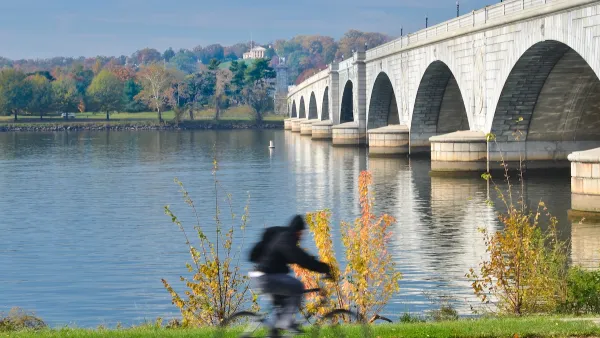A proposed rebate on electric bikes in the District would be more cost-effective in reducing gasoline miles driven than electric car subsidies thanks to the higher elasticity of e-bike demand.

According to an article by David Edmondson in Greater Greater Washington, a proposed $400 to $1,200 e-bike subsidy in Washington, D.C. “packs the most pollution-fighting power” compared to other plans to promote the adoption of zero-emission transportation, bringing the biggest return on investment for reducing gasoline miles driven.
As Edmondson explains, this has to do with the economic concept of elasticity. “[Zero-emission vehicles] are a lot more expensive than e-bikes and, therefore, it takes a lot of money to meaningfully lower the cost of a ZEV compared to an e-bike.” Edmondson used a Canadian model to predict e-bike sales under the new subsidy, predicting a rise of 15 percent in annual sales. “Remarkably, 44% of those sales would go to incentivized buyers who would not have otherwise purchased an e-bike,” Edmondson notes. Most electric car subsidies, on the other hand, tend to be used by people who would already buy electric or hybrid cars.
While they can’t replace all vehicle trips, e-bikes can have a significant impact on gasoline miles. “When a household buys an e-bike, their driving (as measured by vehicle miles traveled, or VMT) decreases by more than a third,” Edmondson found. “When that is taken into consideration, an e-bike subsidy is 2.9 times more effective per dollar at displacing gasoline miles than a ZEV subsidy.”
Edmondson points out the added benefits of e-bikes, such as better health, easier charging, requiring fewer resources for batteries and putting less strain on city streets, and reduced safety risks for pedestrians and other road users.
FULL STORY: Analysis: E-bike subsidies are more cost-effective than EV subsidies

National Parks Layoffs Will Cause Communities to Lose Billions
Thousands of essential park workers were laid off this week, just before the busy spring break season.

Retro-silient?: America’s First “Eco-burb,” The Woodlands Turns 50
A master-planned community north of Houston offers lessons on green infrastructure and resilient design, but falls short of its founder’s lofty affordability and walkability goals.

Delivering for America Plan Will Downgrade Mail Service in at Least 49.5 Percent of Zip Codes
Republican and Democrat lawmakers criticize the plan for its disproportionate negative impact on rural communities.

Test News Post 1
This is a summary

Test News Headline 46
Test for the image on the front page.

Balancing Bombs and Butterflies: How the National Guard Protects a Rare Species
The National Guard at Fort Indiantown Gap uses GIS technology and land management strategies to balance military training with conservation efforts, ensuring the survival of the rare eastern regal fritillary butterfly.
Urban Design for Planners 1: Software Tools
This six-course series explores essential urban design concepts using open source software and equips planners with the tools they need to participate fully in the urban design process.
Planning for Universal Design
Learn the tools for implementing Universal Design in planning regulations.
EMC Planning Group, Inc.
Planetizen
Planetizen
Mpact (formerly Rail~Volution)
Great Falls Development Authority, Inc.
HUDs Office of Policy Development and Research
NYU Wagner Graduate School of Public Service





























